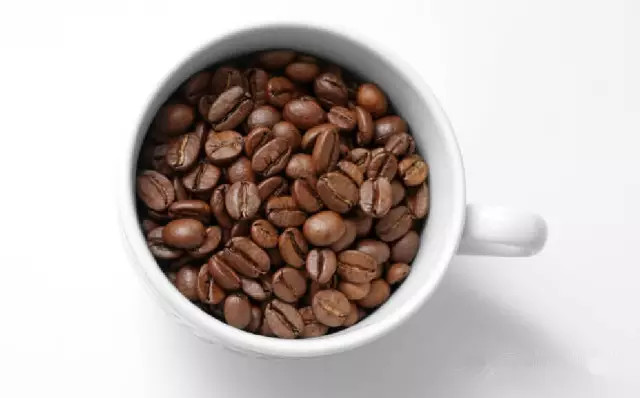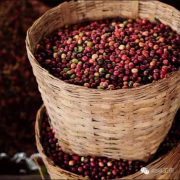Talking about the Regional Flavor of Coffee in Central America-- Honduras, where the annual output of coffee is amazing.

For professional baristas, please follow the coffee workshop (Wechat official account cafe_style)
The annual output of coffee in Honduras is amazing, and it is currently the sixth largest coffee producer in the world and the largest coffee producer in Central America. Almost everyone is a coffee farmer, and now such a large output must be attributed to the strong support of the Hongguo government. About a decade ago, coffee production in Honduras was not high because of the humid climate and heavy annual rainfall, which greatly increased the difficulty of drying coffee beans, which in turn affected the quality of coffee beans. the whole situation began to turn around when the macro government realized the problem. Through the update of production technology and tools, the output of Honduras in 2011 exceeded that of Guatemala and Costa Rica combined, and since then Honduras has steadily ranked first in Central America.
The whole coffee region of Honduras is divided into six major producing areas. Coffee is grown on average on hillsides above 1100 meters above sea level. The more famous of the six producing areas is Santa Barbara. In addition to the signature sugar flavor of Central America, the coffee beans here are often identified with "complex and multi-layered fruit flavor and high acidity".
The hometown of molasses on the tip of the tongue
Central America, which connects the two continental blocks of South and North America, is bordered by the Caribbean Sea in the east and the Pacific Ocean in the west. The topography is long and narrow, which is greatly affected by the marine climate. Central America is a mountainous terrain, volcanic activity is active, natural volcanic ash also makes the soil particularly fertile, a variety of environmental factors make Central America has unique coffee growing conditions. Central America was colonized by Spain and did not become independent until 1821. It is rumored that coffee beans were brought in during the Spanish colonial period and were first grown only in Costa Rica, and then coffee was gradually grown in Central American countries.
It is not too much to say that Central America is the "hometown of molasses on the tip of the tongue". The flavor of coffee in Central America has always been characterized by "sugar". In addition to the smell of molasses, it also has a soft and sour taste, giving the coffee more levels of flavor. Even the coffee grown in the volcanic areas can taste the faint smoky aroma and mellow taste brought by the volcano.
The temperature difference between day and night brews the taste of molasses.
The reason why Central American coffee has a molasses taste is that there are many volcanoes and towering terrain. Coffee beans are grown on hillsides at higher elevations, bathed in the sun during the day and adjusted to a cool temperature by a gentle sea breeze at night. In such a geographical environment, the temperature difference between day and night is great, which lengthens the ripening time of the coffee fruit and makes the fruit sweeter, making it a unique taste of molasses in Central America.
Important Notice :
前街咖啡 FrontStreet Coffee has moved to new addredd:
FrontStreet Coffee Address: 315,Donghua East Road,GuangZhou
Tel:020 38364473
- Prev

Exploring the Coffee producing area in Asia-- Vietnam Vietnam is the second country in coffee production in the world.
Exchange of professional baristas Please follow the coffee workshop (Wechat official account cafe_style) the country of the sun in Asia, perhaps near the equator, the impression is always sunny, rice, spices, tropical fruits and Buddhism, this is our general understanding of Asia, in fact, this impression is not far from the personality of Asian coffee. Local conditions are the key to determine the flavor of coffee.
- Next

Regional Flavor of Central American Coffee--Guatemala Runner-up in Annual Production of Central American Coffee
Professional barista exchanges, please pay attention to coffee workshop (Weixin Official Accounts cafe_style ) The runner-up in the annual production of Central American coffee is Guatemala. There are 8 major producing areas in the whole territory (including Antigua, Acatnam Fruit, Coban Rainforest, San Marco Volcano, Attitlan, Vivi Heights, Farahannes Plain and New Oriental). Among these eight producing areas, Antigua and Vivitin South Fruit are the most
Related
- Does Rose Summer choose Blue, Green or Red? Detailed explanation of Rose Summer Coffee plots and Classification in Panamanian Jade Manor
- What is the difference between the origin, producing area, processing plant, cooperative and manor of coffee beans?
- How fine does the espresso powder fit? how to grind the espresso?
- Sca coffee roasting degree color card coffee roasting degree 8 roasting color values what do you mean?
- The practice of lattes: how to make lattes at home
- Introduction to Indonesian Fine Coffee beans-- Java Coffee producing area of Indonesian Arabica Coffee
- How much will the flavor of light and medium roasted rose summer be expressed? What baking level is rose summer suitable for?
- Introduction to the characteristics of washing, sun-drying or wet-planing coffee commonly used in Mantenin, Indonesia
- Price characteristics of Arabica Coffee Bean Starbucks introduction to Manning Coffee Bean Taste producing area Variety Manor
- What is the authentic Yega flavor? What are the flavor characteristics of the really excellent Yejasuffi coffee beans?

